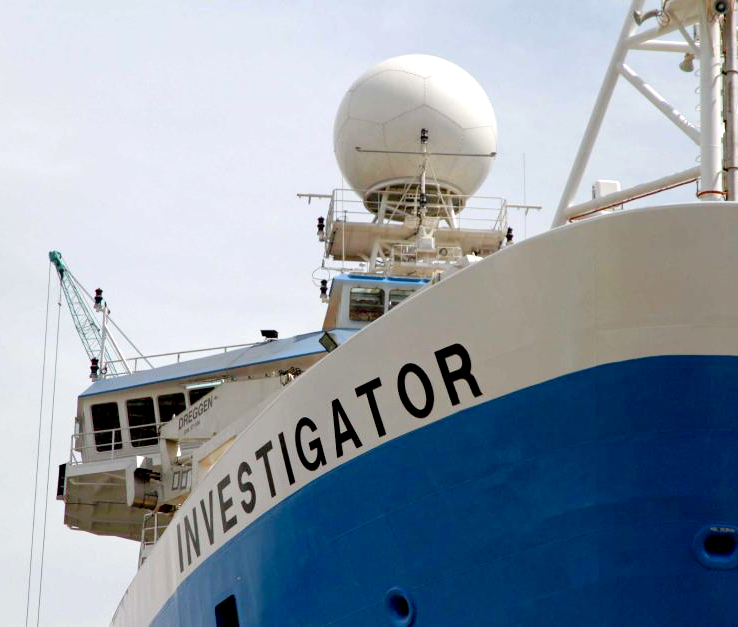Ship's docking brings new level for sea science
 Australia’s chief research group has finally taken delivery of its incredible new science vessel.
Australia’s chief research group has finally taken delivery of its incredible new science vessel.
CSIRO has received its new $122 million marine research vessel, RV Investigator, close to 12 months late.
But the authorities say they are thrilled to get possession of the game-changing marine research ship.
CSIRO’s new ship will arrive in Hobart in coming weeks where it still has to be kitted-out with all its research equipment, worth about $6.7 million.
A string of delays meant Investigator – which was meant to be completed in September 2013 and be operational by March 2014 – was stuck in its Singapore shipyard for months. Those setbacks have taken a chunk out of CSIRO's 2014 research program.
RV Investigator project head Toni Moate, who picked up the keys in Singapore this week, says delays are expected for a build of this size and complexity.
“This is a one-off build, it's really complicated and it's a unique design,” she said, speaking to reporters from onboard the vessel.
“Along the way, there's been some issues that have arisen. But what I can say is we've worked with [contractor] Teekay, we've worked with the [Sembawang] Shipyard and we've resolved those to our mutual best interest,” she said.
“So we've had to work hard.
“At the end of the day it's really the quality of the ship as a floating research platform that's of most interest to the scientists.
“You have to be on the Investigator to get some sense of how enormous it is and the scale of the operation.”
There has been much anticipation at what will be the ship’s new home in Tasmania, even after Federal Government budget cuts slashed $110 million from CSIRO’s budget in May
$65 million was put aside to operate the Investigator over the next four years.
The ship is truly the state-of-the-art; capable of staying at sea for 60 days at a time.
It has a range of 10,000 nautical miles in a single voyage, and can travel anywhere from the equator to the edge of Antarctica. The ship’s predecessor, Southern Surveyor, could only sail to 50 degrees south.
At 94 metres long, Investigator can accommodate up to 40 scientists studying at sea.
Around 1,100 sheets of steel were used in construction, with the one-off design built in pieces weighing several tonnes each. The largest single chunk weighed-in at 140 tonnes.
There is a 1.7 tonne long range weather radar atop the ship, and onboard laboratories are capable of multi-disciplinary work in chemistry, physics, biology, geology, ocean atmospherics and other fields.
Investigator replaces the former leading Australian science ship, the 66-metre Southern Surveyor.
The former vessel was originally a fishing boat, unlike its new custom-built replacement, and only accommodated 15 scientists at a time.
Southern Surveyor was sold in December for $270,000 to an Indian company, and is reportedly be re-tooled as a piracy guard vessel for use off Africa.
CSIRO Staff Association's Sam Popovski told the ABC that the milestone would be bittersweet.
“We have got another approximately 60 jobs going from the CSIRO in Hobart, so even though CSIRO has committed to using the new vessel, it is not using it to capacity and there is a reduced amount of staff in Hobart that are able to access it to do their research,” he said.
“We've got an exciting new ship with all this capacity yet we've been scrambling to find the funds from government and other sources to actually run it when it gets here.
“I think the disappointment from staff's perspective is the lack of operational funding and the need for stopgap funding to just actually work the ship, and that's been the downside of this whole story.”
A statement from Industry Minister Ian McFarlane, who also holds the Science portfolio in the absence of a Federal Science department, welcomed the ship and took a swipe at Labor.
“The $65 million for the operation of the RV Investigator is a significant investment in scientific research at a time when all parts of the community and all sectors of government have to contribute to the repair of Labor's debt and deficit disaster,” he said.








 Print
Print